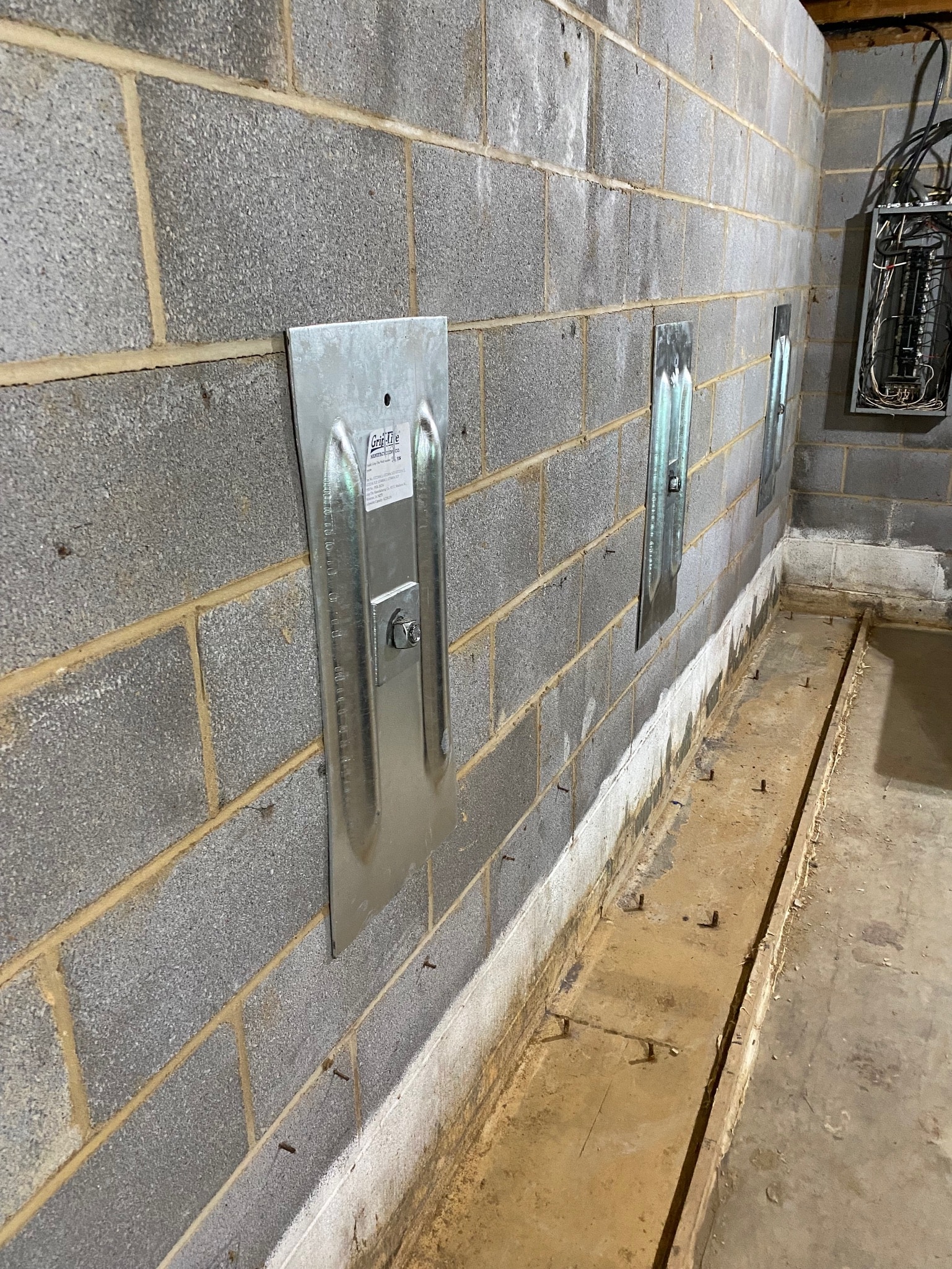
Home renovations can transform a space, updating styles, improving function, and increasing property value. But sometimes, what’s hidden beneath the surface tells a very different story. In many cases, foundation problems are covered up, intentionally or not, during remodeling projects.
Whether it’s new flooring that masks uneven subfloors or fresh drywall that hides growing cracks, renovations may create the illusion of structural health. But if underlying foundation damage is left unaddressed, the improvements won’t last — and may even make the situation worse.
In this article, we’ll explore how past renovations can conceal foundation issues, what signs to look for when evaluating a remodeled home, and how foundation experts like Seal-Tite Basement Waterproofing uncover the truth behind cosmetic upgrades.
🔑 Key Takeaways
- Cosmetic renovations can cover signs of serious foundation damage.
- Uneven floors, misaligned trim, or fresh drywall may hide deeper issues.
- Common upgrades like flooring, drywall, and tile often mask shifting or cracking.
- Professional inspections can identify hidden foundation damage before it spreads.
- Repairing the root problem protects your investment and prevents future costs.
Why Foundation Issues Are Sometimes Covered Up
During renovations, contractors or homeowners may unknowingly (or purposely) focus on surface-level fixes. Instead of addressing the root cause — like settling footings or bowing walls — they cover the symptom:
| Foundation Symptom | Common “Cover-Up” During Renovation |
|---|---|
| Cracked basement wall | Drywall, paneling, or shelving over the area |
| Uneven or sloping floor | New carpet, tile, or engineered wood flooring |
| Door misalignment | Adjusted door frames or trimmed doors |
| Gaps in ceiling or molding | New paint or patched plaster |
| Musty basement smell | New finishes or air fresheners |
While these changes may look clean and updated, the underlying issue remains, and often continues to worsen behind the scenes.
Common Renovation Projects That Can Mask Foundation Damage
1. New Flooring Installation
Luxury vinyl plank, tile, or carpet can be laid over uneven subfloors caused by foundation settlement. Instead of fixing the slope, some installers use leveling compounds or thick underlayment to smooth it out — temporarily.
2. Drywall Replacement or Painting
Drywall can cover cracked or bowed basement walls, stair-step cracks, or wall separation. A fresh coat of paint may conceal discoloration caused by past water intrusion or humidity.
3. Trim and Molding Upgrades
Misaligned baseboards or crown molding are often removed and reinstalled to appear “straight.” But when walls or ceilings are shifting, the trim will soon separate again unless the foundation is corrected.
4. Bathroom or Kitchen Remodels
Cracked tiles or countertop separation can be signs of movement. When these surfaces are replaced, it may hide the evidence of ongoing structural stress beneath.
5. Finished Basements
Basement remodels often include framing over concrete walls, installing drop ceilings, or building storage around utility areas. These improvements may block visual access to key signs of foundation distress — like bowing walls or moisture intrusion.
Why This Matters for Homeowners
If you’re living in — or buying — a home that’s been recently remodeled, it’s easy to assume that everything is sound. But ignoring what’s behind the walls can lead to:
- Repeated cosmetic damage (new cracks, floor damage, trim separation)
- Mold or water intrusion in finished spaces
- Structural movement that worsens over time
- Decreased property value or sale complications later
- Costly repairs that could have been avoided with early detection
Real-Life Example: A Renovation with a Hidden Price
A couple in Lynchburg, VA, bought a beautifully remodeled 1950s home. The floors were new, the basement was finished, and every room had fresh paint. But just two months after moving in, they noticed:
- Cracks forming in the newly painted stairwell
- Doors that no longer closed properly
- A musty smell in the finished basement bedroom
They called Seal-Tite Basement Waterproofing for an inspection. What we found:
- Behind the drywall in the basement were horizontal cracks across two walls
- The floor had settled nearly ¾ inch across the living room
- The finished basement trapped humidity, causing mold to grow behind insulation
Solution Provided:
- Wall stabilization using carbon fiber straps
- Installed French drains and a sump pump to manage moisture
- Lifted and stabilized flooring using helical piers
- Mold remediation and vapor barrier installation behind basement walls
The house was structurally stabilized, and the couple was able to protect their investment with peace of mind.
How Foundation Experts Detect Damage Behind Renovations
Even when signs are hidden, a trained inspector knows where — and how — to look for clues:
🔍 Floor Leveling Tools
Laser levels detect even slight floor slope or differential settlement beneath new flooring.
🔍 Wall and Ceiling Measurements
Gaps between ceilings and walls, especially in corners, indicate movement — even if covered with paint.
🔍 Thermal Imaging and Moisture Detection
Used to locate areas of water intrusion, humidity, or poor insulation behind finished walls.
🔍 Foundation Crack Mapping
Evaluating exterior and accessible parts of the foundation helps determine if cracking continues behind covered areas.
🔍 Door and Window Diagnostics
Measuring door frames, checking swing function, and evaluating frame spacing reveals if settling is affecting upper structures.
What to Do If You Suspect Renovations Are Hiding Problems
1. Schedule a Foundation Inspection
Get a professional foundation evaluation — especially if the home was recently flipped or remodeled.
2. Don’t Rely Solely on Cosmetic Appearance
Cracks, slopes, and odors can reappear quickly if the structure is compromised.
3. Ask for Renovation Documentation
Find out what was updated and whether structural work was included — or ignored.
4. Look for Recurring Issues
If cracks reappear soon after remodeling, it’s a red flag that the foundation may be unstable.
5. Invest in Permanent Repairs, Not Temporary Fixes
Repainting a cracked wall or replacing a warped floor without addressing the foundation is a short-term bandage.
FAQs: Renovations and Hidden Foundation Problems
Can new drywall completely hide foundation wall cracks?
Yes — drywall and paneling often cover bowing or cracked walls. Only an inspection can confirm what’s behind it.
Should I be worried if a house was just renovated?
Not necessarily. But it’s important to verify the foundation condition before assuming the home is sound.
Will foundation repairs ruin the remodeling work?
Modern repair techniques are designed to be minimally invasive, and many can be done from the exterior or basement side without damaging finished areas.
Are flipped houses more likely to hide damage?
Not always, but flipped properties are often remodeled quickly and may prioritize appearance over long-term stability.
Will buyers be concerned if I repaired the foundation after renovations?
On the contrary — buyers are often reassured by documented, professional repairs and warranties from companies like Seal-Tite.
Conclusion: What You Can’t See Can Hurt Your Home
A beautifully remodeled room doesn’t mean the foundation is solid. If the base of the home is shifting, cracking, or settling, no amount of paint, flooring, or trim will fix the root of the problem.
Whether you’re a homeowner, a buyer, or a seller, it’s essential to look beneath the surface. With a professional foundation inspection, you can uncover hidden issues early, take proactive steps to protect your investment, and ensure that every layer of your home — from the concrete to the crown molding — is built on solid ground.
If you suspect renovations might be hiding foundation issues, contact Seal-Tite Basement Waterproofing today. We’ll give you the clarity you need and the long-term solutions your home deserves.

Seal-tite Basement Waterproofing Co. is a full service basement environment contractor. We carry an A+ Better Business Bureau rating. We repaired over 40,000 homes and structures in Virginia, West Virginia, Tennessee, and North Carolina. We are fully insured and licensed. We have worked in all types of locations, including residential and commercial locations, government agencies, colleges, hospitals, churches, and condo associations.
Seal-tite® offers a lifetime transferable warranty. We carry a Class A Contractor’s License and we are fully insured. Our satisfied customers range from government agencies to businesses, hospitals, colleges, churches, and thousands of homeowners. Your home is probably the single largest investment you will make in your lifetime. Don’t wait, call Seal-tite® to help make your home dry, safe and livable.

